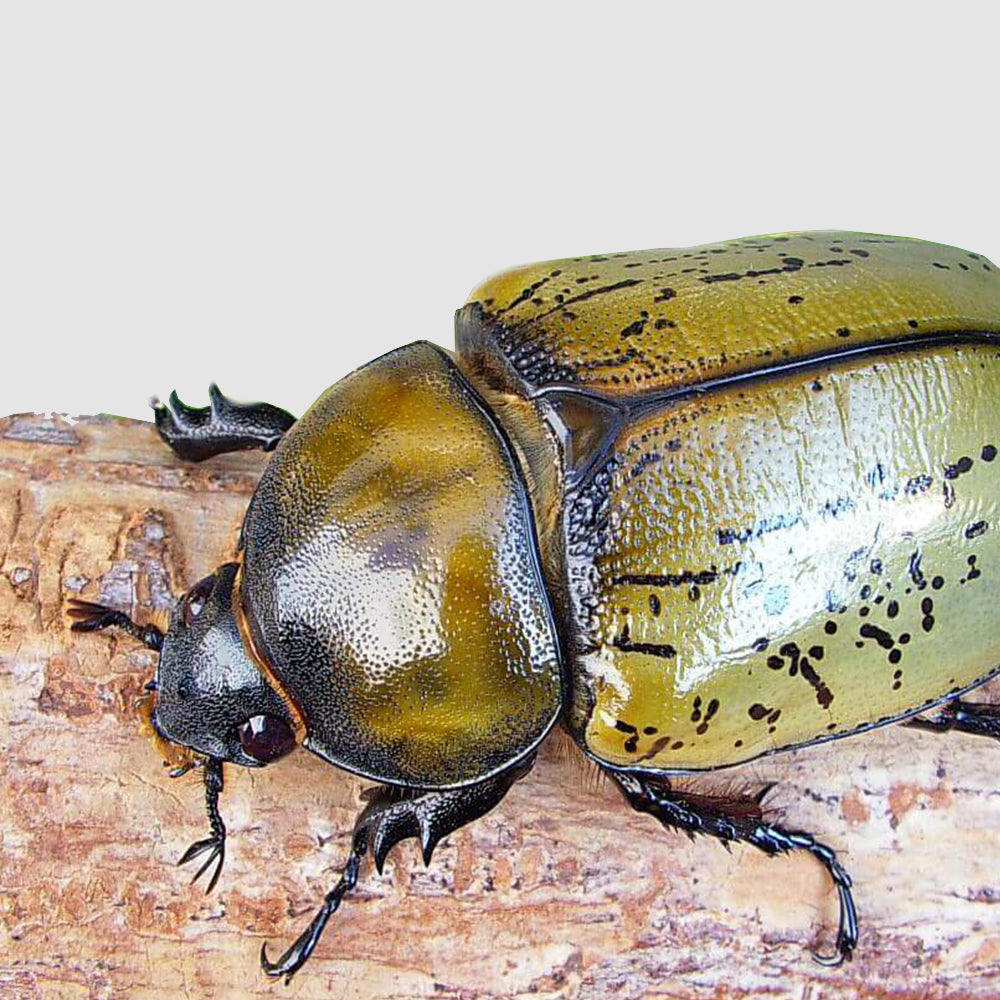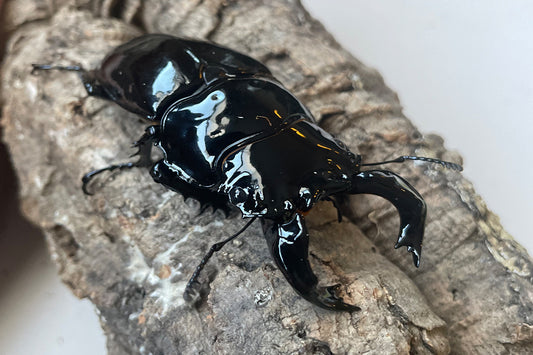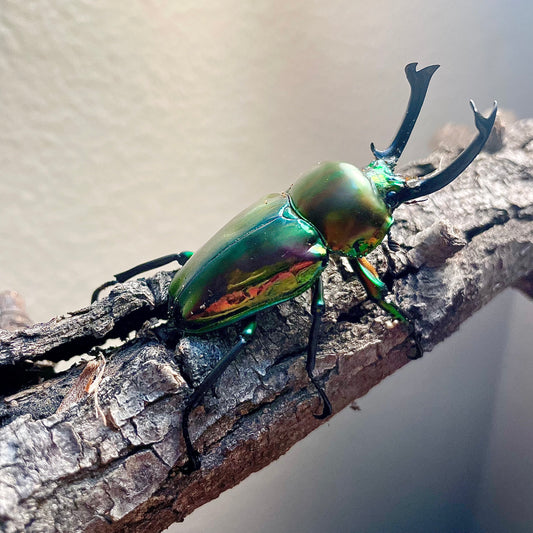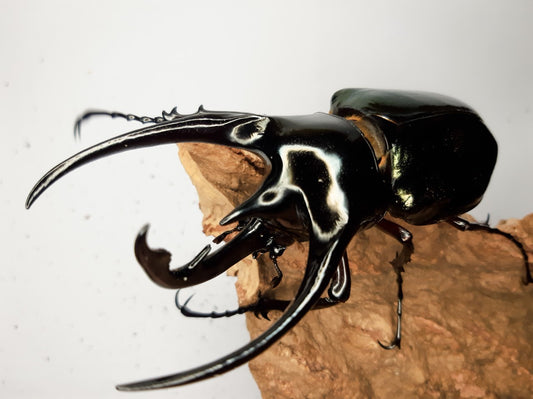Beetle Saga
LARVAE: Eastern Hercules beetle (Dynastes Tityus)
LARVAE: Eastern Hercules beetle (Dynastes Tityus)
Couldn't load pickup availability
#Beginner #Tame #BudgetFriendly
"Eastern Hercules Beetle," also known as Dynastes Tityus. From head to tail, these beetles shine in golden hues with unique spots and patterns. Their lifespan is longer compared to other beetles, almost a year, and their non-picky eating habits make them favorites among keepers, providing long-term enjoyment.
- Native Habitat: Primarily found in the eastern region of North America.
- Features: Their bodies sport unique yellow markings and patterns.
- Size: 40-70 mm
- Larvae Stage: 8-18 months
- Space for Larvae: 1800-3000ml (males)
- Adult Lifespan: 4-12 months.
- Behavior: Lively and friendly
- Substrate and Air Temperature: 68-78°F (18-25 ° C) / Humidity: 60-80%.
- Food: Beetle Jelly
- Difficulty: Beginner
- Housing Tips: It's better to keep adult beetles in their individual containers
Rearing Tips:
- Hibernation can last for 2-3 months or more.
- It's best to provide separate containers for adult beetles, ensuring they have enough space.
Beetle larvae go through 3 different larval phases: L1, L2, and L3. After the L3 stage, the larva pupates to turn into an adult beetle!
This is a L2 or L3 larvae, it takes 8-18 months to turn into an adult beetle.
**Native to the Eastern United States, please do not release them if they are not indigenous to your area.
Thoughts Sharing:
It is much easier to care for compared to Dynates Grantii. The egg stage lasts about 40 days, and because they're naturally not very large, there's not much pressure when caring for them. Just as long as they grow up healthy and safe, they're perfect for beginners.
Some beginners often get confused when raising Dynastes Tityus: "Why does my bug seem a bit different from others?"
This is because Dynastes Tityus is a bug that specifically adapts to survive in various temperatures. They're found from the northern to southern parts of the eastern United States, from snowy New York to sunny Florida beaches.
The length of the larval and dormancy periods depends on the temperature. If you want to breed them, it's best to provide an environment of about 68-78 degrees Fahrenheit – that's just right.
Share


Things you need to know
View all-

Beetle breeding hack: Temperature Control 🌡
Keeping beetles requires basic temperature control, which can be a major challenge for many beginners. Today, let's talk about the importance of temperature control and also explore some beetle species...
Beetle breeding hack: Temperature Control 🌡
Keeping beetles requires basic temperature control, which can be a major challenge for many beginners. Today, let's talk about the importance of temperature control and also explore some beetle species...
-

Understanding the Life Cycle of Beetles
Insect growth patterns primarily fall into two categories: Incomplete Metamorphosis — Where larvae and adults are quite similar in appearance, like crickets and cockroaches. Complete Metamorphosis — Where larvae and...
Understanding the Life Cycle of Beetles
Insect growth patterns primarily fall into two categories: Incomplete Metamorphosis — Where larvae and adults are quite similar in appearance, like crickets and cockroaches. Complete Metamorphosis — Where larvae and...
-

Be a Beetle Rearing Expert: The facts that you ...
Becoming a beetle rearing expert is a fascinating journey into the world of these remarkable insects. Whether you're a beginner or an experienced enthusiast, there are essential aspects to consider...
Be a Beetle Rearing Expert: The facts that you ...
Becoming a beetle rearing expert is a fascinating journey into the world of these remarkable insects. Whether you're a beginner or an experienced enthusiast, there are essential aspects to consider...




